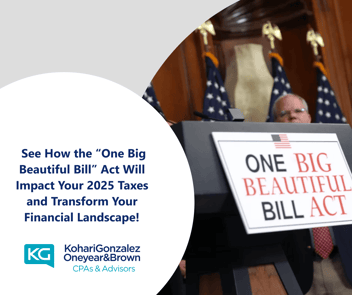
Article Highlights:
- Special Transfer Option
- Does the Vehicle Qualify for Credit
- MSRP and Purchase Price
- Taxpayer Qualifications
- Modified AGI
- Applying for the Credit Transfer
- Change of Mind
- About the Credit
A taxpayer buying a new or previously purchased clean car may transfer the whole permissible credit to an approved (registered) dealer starting in 2024 by making a special election. The dealer then uses the credit to cover the cost of the car purchase. To put it briefly, the tax credit can be used to lower the purchase price by the credit's amount. Additionally, this helps taxpayers fulfill down payment obligations and avoids having to wait to get the credit until after filing their tax return for the year of the purchase.
The dealer will be reimbursed by the federal government for the credit amount that is applied to the purchase.
It is not required for a buyer to transmit the credit to the dealer; taxpayers may elect to claim the tax credit on their return in lieu of passing a clean vehicle tax credit, whether it is new or previously owned, to the dealer. However, there are a few things to think about before deciding whether or not to transfer the credit to an approved dealer, should that be the taxpayer's preference.
Does The Vehicle Qualify For Credit?
When looking for a vehicle that qualifies for credit, a buyer may want to first ascertain which cars—both new and previously owned—qualify for credit, even if a dealer must certify that the specific vehicle meets the requirements for credit. You can get that information on the websites listed below.
- New vehicles qualifying for credit is provided by The Department of Energy
- Previously owned clean vehicles qualifying for credit is provided by the IRS
The cost of qualifying automobiles must also be less than a set amount. The MSRP (manufacturer suggested retail price) of new cars must be less than $80,000 for trucks, vans, and SUVs and $55,000 for other types of cars. The dealer price for a clean, previously owned car must be $25,000 or less. Furthermore, a previously owned clean car must to belong to a model year that is at least two years ahead of the taxpayer's acquisition year.
Taxpayer Qualifications
A taxpayer must first confirm that they are eligible for a credit. Starting in 2023, the credit will impose limits on the buyer's income that may be used to qualify for a credit. These restrictions apply to both newly purchased and previously owned clean automobiles. The taxpayer will not be eligible for the credit if even one dollar of their modified adjusted gross income (MAGI) exceeds the cap. Taxpayers may utilize the MAGI from their prior year's return or their 1040 return for the year of purchase. For that reason, the 2023 or 2024 MAGI can be applied when buying a car in 2024. The table below provides an illustration of the MAGI limits.
|
BUYER INCOME LIMITATIONS - QUALIFIED CLEAN VEHICLES |
||
|
Filing Status |
Modified AGI |
|
|
New Vehicles |
Previously Owned Vehicles |
|
|
Married Filing Joint & Surviving Spouse |
$300,000 |
$150,000 |
|
Head of Household |
$225,000 |
$112,500 |
|
Others |
$150,000 |
$75,000 |
For most taxpayers, line 11 of the 1040 indicates AGI, which is the same as MAGI. The phrase "modified AGI" refers to the situation in which taxpayers who have, in rare circumstances, removed income from foreign countries or U.S. possessions must be put back for the purposes of the restrictions.
Furthermore, a taxpayer buying a previously owned clean car cannot be a dependency of another individual, nor may they have received a credit for a previously owned clean vehicle during the preceding three years.
It is significant to remember that if a taxpayer successfully transfers a credit to an authorized dealer but is not qualified for the credit, they will be required to reimburse the credit on their tax return for the year of purchase. There aren't any clauses pertaining to forgiveness. This may present an unforeseen financial strain for certain taxpayers.
Applying for the Credit Transfer
The necessary information must be sent by the taxpayer to the qualified dealer from whom they want to acquire a new or previously purchased clean vehicle. The dealer will then submit this information to the IRS for approval. It is expected that the dealer would get the monies in 48 to 72 hours if the IRS approves the transaction report. Dealers will be able to check online in real time whether or not their advance request was approved. The taxpayer is not eligible to claim the credit for a newly purchased or previously owned clean car if the seller report is denied. Therefore, prior to completing a transaction and putting a car in service, buyers and dealers are highly advised to get confirmation that a seller report was successfully completed.
The purchaser information needed to be submitted includes:
- Date of the transfer election.
- Taxpayer identification number (generally the taxpayer’s Social Security number).
- A photocopy of a valid government-issued photo identification document (such as a driver’s license or passport).
-
- That either MAGI for the prior year OR the current did not exceed the limits. If not known, then to the best of their knowledge it will not exceed the limits.
- For new clean vehicles, that the vehicle will be used predominantly for personal use or for previously owned clean vehicles, that the qualified buyer requirements are met.
- An income tax return will be filed for the taxable year in which the vehicle is placed in service with proof of certain qualifications.
- Election is prior to placing the vehicle in service and this is the first or second transfer election made during the taxable year.
- If the MAGI limits are exceeded the advance credit will be repaid for the tax year the vehicle was placed in service.
- The credit transfer was voluntarily elected.
Change of Mind
Once the sale is finalized, the taxpayer cannot change their mind about whether to transfer the credit to the dealer.
About the Credit
There is no rollover and no return for the clean car credits. Non-refundable implies that any surplus is lost and may only be used to reduce a taxpayer's tax obligation on their tax return for the year in which it is claimed.
Furthermore, the IRS states that a partial credit transfer is not permitted; it must be an all-or-nothing arrangement in cases when the taxpayer transfers the credit to the dealer. In this case, it could be better for the taxpayer to wait and file their tax return later to claim the credit. By doing this, they avoid having to repay a portion of the credit and getting the whole advantage from the dealer. On the other hand, they only receive credit for the amount they are entitled to when they claim the credit on their tax return.
As you can see, there are several factors to take into account when it comes to clean car credit, both for new and used cars. In order to receive assistance specific to your situation, please get in touch with this office.



